Impact of a developmental language disorder : steps toward remediation
Posted on Friday December 22nd, 2017 by Michèle Minor-Corriveau
Several impacts inevitably stem from developmental language disorders (#DLD123) or delays. However there are options to make the most of interventions with children whose success in school is affected by these types of impairments. The goal of this post is to provide an overview of evidence-based practice and to suggest activities to help overcome these difficulties in order to maximise student success.
DLD and its impact on health and well-being
According to the Public Health Agency of Canada (2017), education and literacy were ranked the third most important social determinants of health, after income and social status, and social support networks. Since academic success is considerably influenced and shaped by oral and written language skills, communicating orally and in writing has an indirect impact on health, as demonstrated in certain studies (Luinge, Post, Wit & Goorhuis-Brouwer, 2006; McCain & Mustard, 2002).
DLD and its impact on social well-being
When speech and language impairments are not resolved by five years of age, there is a risk of behavioural issues (Gaines, 2002; McCain & Mustard, 2002; Vallance, Cummings & Humphries, 1998), antisocial behaviours (Stattin & Klackenberg-Larsson, 1993) and mental health issues (Young, Beitchman, Johnson, Douglas, Atkinson, Escobar & Wilson, 2002). Even in preschool, students who have communication impairments are less likely to make friends easily (Gernter, Rice & Hadley, 1994; Guay, Boivin & Hodges, 1999). Peer rejection and victimization have also been well documented (Gernter et al. 1994; Guay et al., 1999) among those who experience language difficulties or disorders.
Furthermore, students with DLD are more likely than their peers to quit school, have less favorable social and professional conditions and are more likely to require social assistance (Young et al., 2002). Poor oral language skills also result in limited academic success in all subjects of the curriculum (Knox, 2002; Stothard, Snowling, Bishop, Chipchase & Kaplan, 1998) and these performance gaps persist in all subjects throughout secondary and postsecondary studies (Johnson et al., 1999; Pierre, 1992; Stothard et al., 1998)
DLD and its impact on academic performance and success
The relationship between oral and written language is well documented (Billard, 2001; Callu, Jacquier-Roux, Giannopulu & Dellatolas, 2003). In fact, 40-75% of students with DLD also have trouble learning to read (Bishop & Adams, 1990; Catts, Fey, Tomblin & Zhang, 1999; Catts & Kahmi, 2005). Written language development is often considerably delayed in children who experience difficulties with oral expression (Gillam & Johnston, 1992; Mackie & Dockrell, 2004; Scott & Windsor, 2000; Teberosky, 2002).
Unresolved speech and language impairments at five years old can lead to both academic (Aram & Nation, 1980; Loban, 1976; Paul, 2013) and language (Aram & Nation, 1980) struggles, including writing (Roy, Maeder & Beley, 1992), reading (Roy et al., 1992; Stattin & Klackenberg-Larsson, 1993) and learning (McCain & Mustard, 1999; Roy et al., 1992). Children with DLD may experience problems with written language even when difficulties seemed to be resolved before they started school (Fey, Catts & Larrivée, 1995; Scarborough & Dobrich, 1990). About 50% of students who exhibit poor reading skills in Grade 2 also have difficulties understanding oral language (Catts, Hogan & Adlof, 2005). Further, 88% of students who have difficulty reading in Grade 1 will still be struggling to read in Grade 4 (Juel, 1988).
How then can the impact of oral language difficulties be minimized? Speech and language intervention tends to occur once or twice weekly, for those who are lucky enough to benefit from direct intervention. But what if we aspired to enhance oral language skills within the curriculum, regardless of subject, in fun, authentic, meaningful, language rich interactions? What would that look like? And what would be the impact?
Finding solutions that allow students with DLD to maximize their potential by improving their oral language skills is paramount, so that their written skills can lead to better academic success.
Steps toward remediation
Phonological awareness, vocabulary, knowledge of word, sentence and text structure, comprehension and one’s ability to make inferences are skills that help foster oral and written language development. These skills must be developed simultaneously, through meaningful scaffolding (Nagy & Scott, 2000) in a way that corresponds to the child’s zone of proximal development (Vygotsky, 1978). Promoting these oral language skills by integrating strategies based on scientific evidence is key to integrating these skills in oral language rich environments.
Phonological awareness (PA) is the capacity to reflect on, and manipulate, parts of words. Strong PA skills are essential to reading and writing success. Whether it is to become aware of the syllable or phoneme, or to combine or segment syllables into words, these skills help bring the beginner reader to a higher level of competence. Awareness of syllables precedes phonemic awareness (Torgesen & Mathes, 2000). To encourage children, we can ask them to use an instrument to make a sound for every syllable in a well-known song. Then, we can come back to the lyrics and ask them to identify words that rhyme, and try to find words that start with the same sound. This activity targets both syllable segmentation and identification of rhymes and starting phonemes.
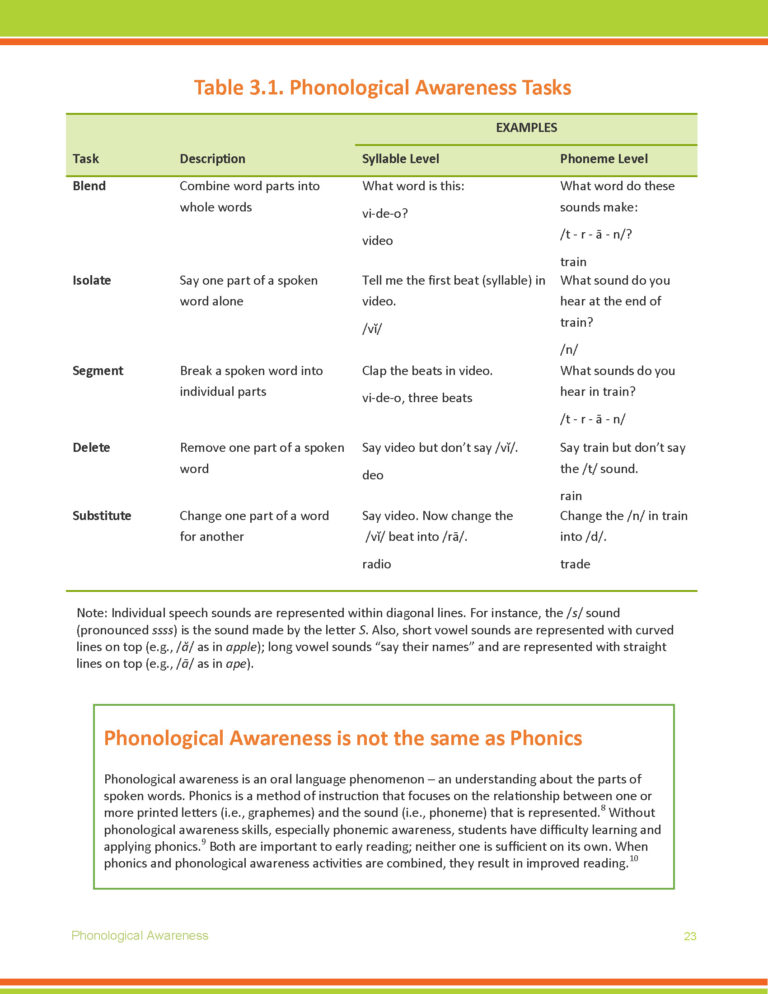
Oral language competency and reading comprehension depend on the student’s prior knowledge and vocabulary. By practicing interactive reading, students must reflect on the meanings of new words and the varied meanings in the targeted context. For this to be beneficial, interactive reading must contain new words (Justice, Meier & Walpole, 2005). For words learned passively (i.e., the student understands what is heard) to be acquired in an active state (i.e., the student uses learned words more fluently), vocabulary revisions are essential. Semantic webs (Giasson, 2003) and graphic organizers (Giasson, 2003; Stahl & Stahl, 2004) provide useful ways to improve vocabulary comprehension and address synonymy, opposites and polysemy, among others.
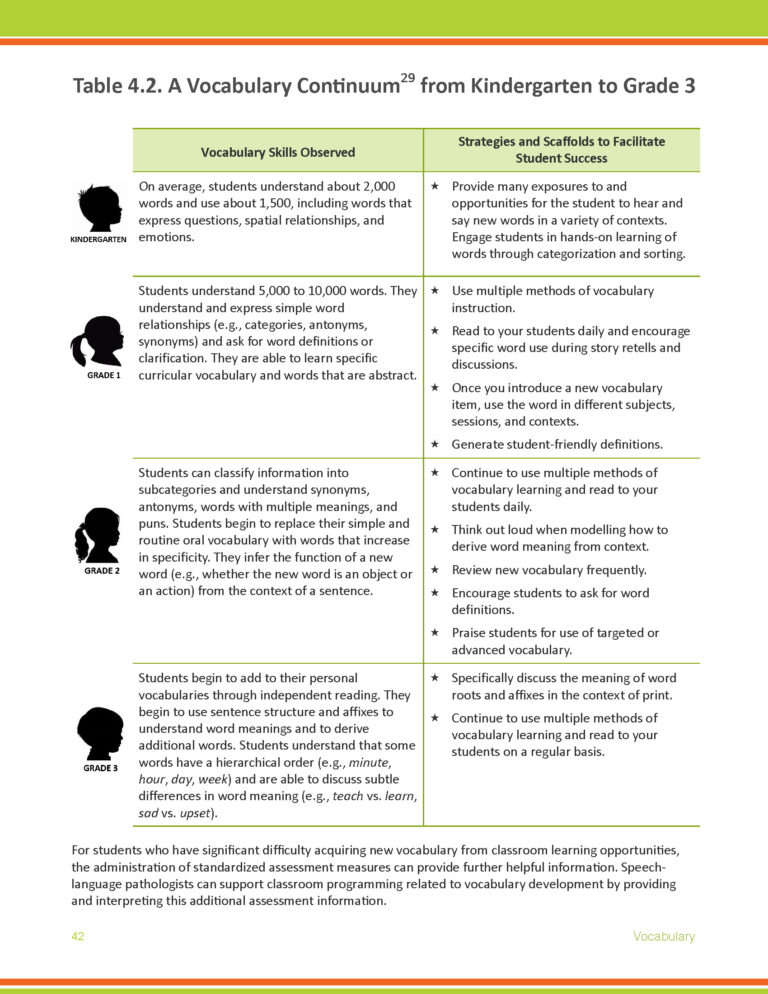
A sufficiently broad range of vocabulary allows the student to have fun while reflecting on word and sentence structure, along with prefixed and suffixed words, during directed reading, for example. By helping the student become familiar with complex sentences, it is also possible to enrich mathematical reasoning skills (Montague, Krawec & Sweeney, 2008; Woodward, 2008). While reading, it is helpful to isolate affixes and discuss the roots of words, to which prefixes and/or suffixes are added to change the meaning. Awareness of word structure – or morphological awareness – is linked to reading comprehension (Nagy, Bernier, Abbott, Vaughan & Vermeulen, 2003).
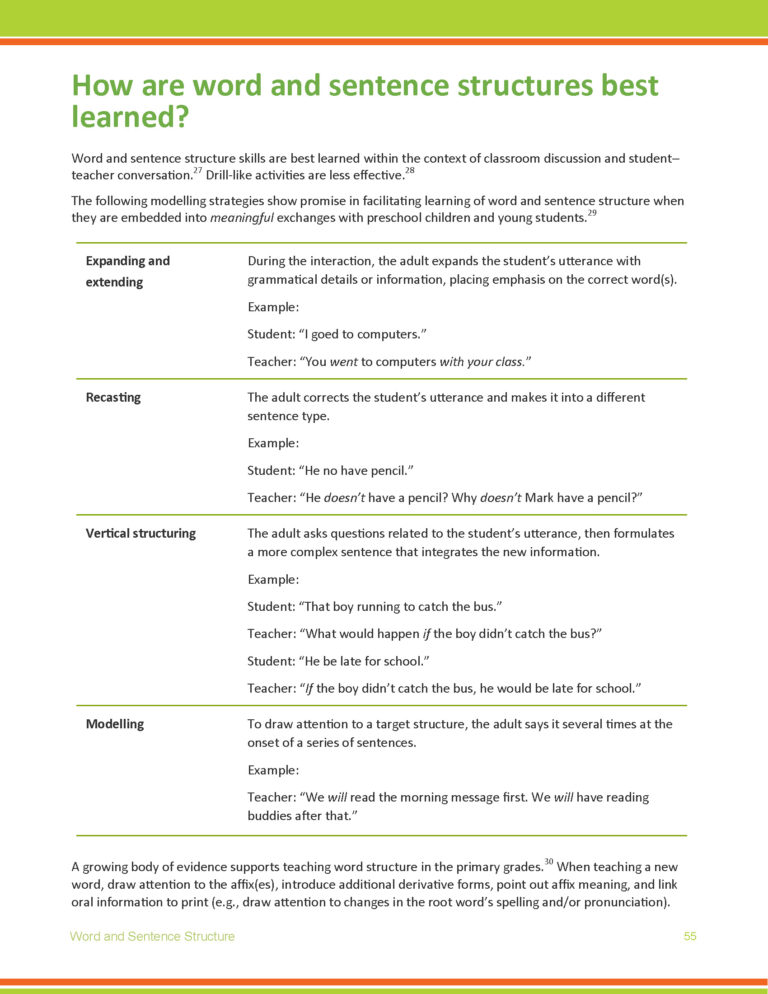
Research supports the need to improve understanding of texts, starting with text structure (informative and narrative texts). When based on a broad enough vocabulary, teaching text structure while using word games and sentence structure games allows the student to maximize opportunities for success at school, either by creating personal narratives or by understanding the narrative structure itself. For the student, writing stories facilitates the transition between the rich, interactive language used at home and the more formal, decontextualized classroom language (Boudreau, 2007; Naremore, Densmore & Harman, 1995; Westby, 1991).
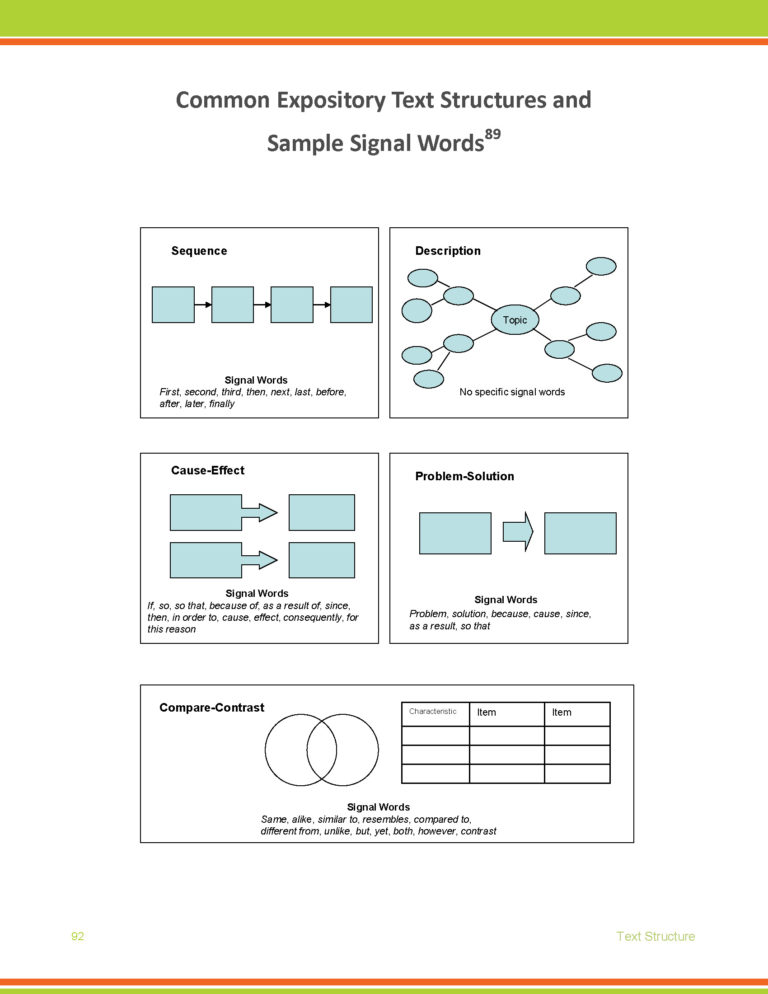
As soon as reading competency is developed, and information in a text can be both extracted and understood, the student is called upon to make inferences. To understand the meaning of a text – which happens to be the ultimate goal of reading – the student must make inferences, since information given is not always explicit. The student can practice making inferences while speaking, during shared readings or while participating in course activities and exchanging with other students in an effort to further develop this ability. The student can then rely on prior knowledge while benefiting from other students’ knowledge too. The student must be able to make predictions about what is read, both orally and in writing. S/He must be able to test hypotheses and adjust theories while reading. This is defined as comprehension checking, an important skill for the student who is listening (Paul, 2013; Walters & Chapman, 2000) and reading (NICHHD, 2000). The ability to ask – and answer – questions is also very helpful.
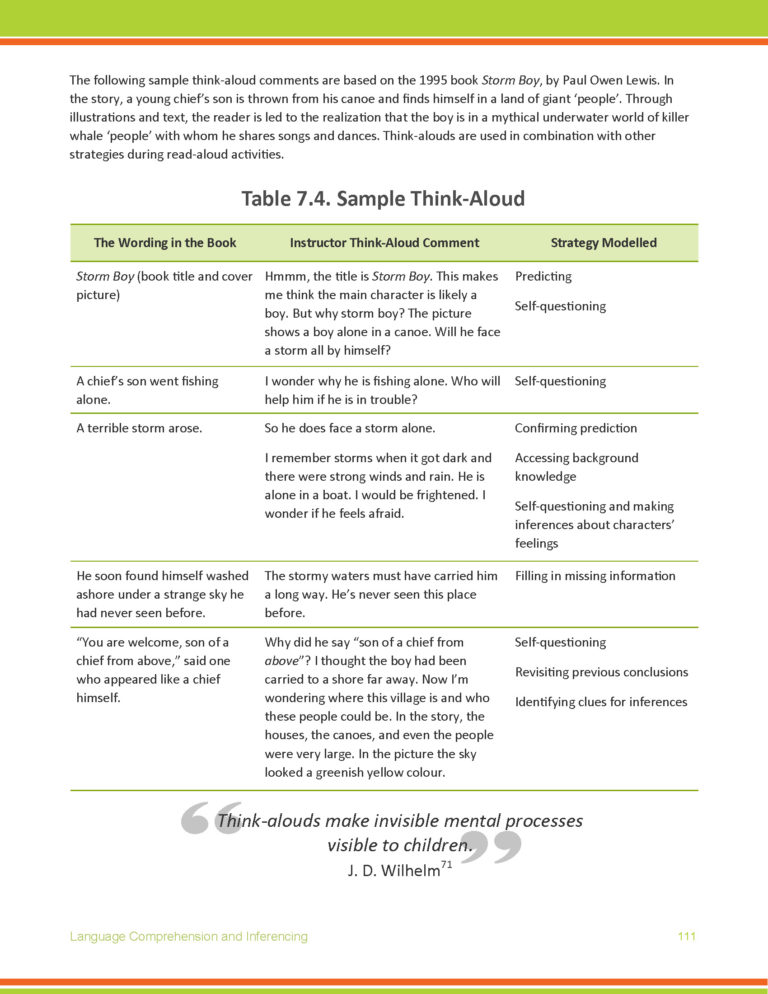
Solid phonological and phonemic awareness, increased vocabulary, and awareness of word, sentence and text structure are all skills required for the student to be able to make inferences on what is read while relying on prior knowledge. It will take years for the student to develop a degree of automaticity in reading sufficient to use texts to generally increase knowledge and, consequently, improve academic success. However, daily practice will promote development of the student’s oral language skills, which will, in turn, enhance writing skills. Since oral language is the common element among all academic subjects, it is conceivable to target these skills though authentic language interactions in all subject matters, which would be of great benefit, not only to students who have developmental language delay or disorder, but to ALL students. All excerpts are taken from this ressource :
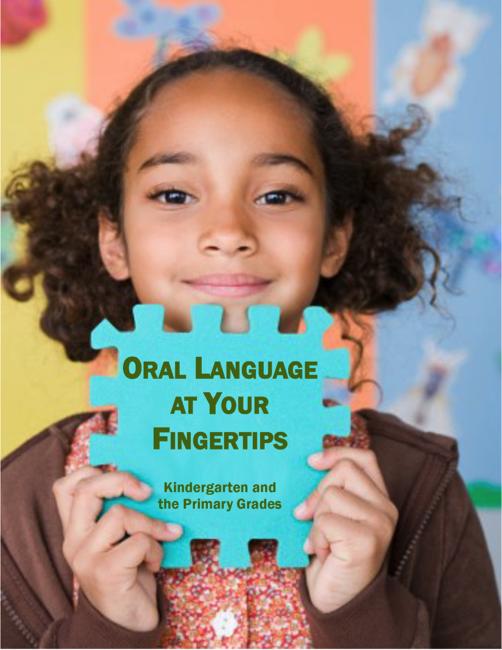
For more ideas, strategies and activities on how to integrate oral language within daily classroom interactions, please check out Oral Language At Your Fingertips.https://micheleminorcorriveau.com/wp-content/uploads/2015/06/Livres_2_Oral-language-at-your-fingertips_ORDER-FORM-for-OLAYF.pdf
References
Aram, D. M., et Nation, J. E. (1980). Preschool language disorders and subsequent language and academic difficulties. Journal of Communication Disorders, 13(2), 159-170.
Billard, C. (2001). Le dépistage des troubles du langage chez l’enfant. Une contribution à la prévention de l’illettrisme. Archives de pédiatrie, 8(1), 86-96.
Bishop, D. V. M., et Adams, C. (1990). A prospective study of the relationship between specific language impairment, phonological disorder, and reading retardation. Journal of Child Psychology and Psychiatry, 31, 1027-1050.
Boudreau, D. M. (2007). Narrative abilities in children with language impairments. Dans R. Paul (Éd.), Language disorders from a developmental perspective: Essays in honor of Robin S. Chapman (pp. 331-356). Mahwah, NJ: Lawrence Erlbaum.
Callu, D., Jacquier-Roux, M., Giannopulu, I., et Dellatolas, G. (2003). Pertinence du repérage par les parents des retards de langage chez l’enfant entre quatre et six ans.
Archives de pédiatrie, 10, 1061-1067.
Catts, H. W., Fey, M. E., Tomblin, J. B., et Zhang, X. (2002). A longitudinal investigation of reading outcomes in children with language impairments. Journal of Speech, Language, and Hearing Research, 45, 1142-1157.
Catts, H. W., Hogan, T. P., et Adlof, S. M. (2005). Developmental changes in reading and reading disabilities. Dans H. W. Catts et A. G. Kamhi (Éds), The connections between language and reading disabilities (pp. 25-40). Mahwah, NJ: Lawrence Erlbaum.
Fey, M., Catts, H., et Larrivée, L. (1995). Preparing preschoolers for the academic and social challenges of school. Dans M. Fey, J. Windsor, et S. Warren (Éds), Language intervention: Preschool through the elementary years (pp. 3-37). Baltimore: Paul Brookes.
Gaines, B. R. (2002). Screening for childhood speech-language problems. The Canadian Nurse, 98(5), 15.
Gernter, B. L., Rice, M. L., et Hadley, P.A. (1994). Influence of communicative competence on peer preferences in a preschool classroom. Journal of Speech and Hearing Research, 37(4), 913-923.
Giasson, J. (2003). La lecture : De la théorie à la pratique. Boucherville : Gaëtan Morin.
Gillam, R., et Johnston, J. (1992). Spoken and written language relationships in language learning impaired and normally achieving school-age children. Journal of Speech, Language, and Hearing Research, 35, 1303-1315.
Guay, F., Boivin, M., et Hodges, E. (1999). Predicting change in academic achievement. A model of peer-experiences and self-esteem processes. Journal of Educational Research, 91(1), 105-115.
Johnson, C. J., Beitchman, J. H., Young, A., Escobar, M., Atkinson, L., Wilson, B., … et Wang, M. (1999). Fourteen-year follow-up of children with and without speech/language impairments: Speech/language stability and outcomes. Journal of Speech, Language, and Hearing Research, 42(3), 744-760.
Juel, C. (1988). Learning to Read and Write: A longitudinal study of 54 children from first through fourth grades. Journal of Educational Psychology. 80(4), 437-447.
Justice, L., M., Meier, J., et Walpole, S. (2005). Learning new words from story books: An efficacy study with at-risk kindergarteners. Language, Speech, and Hearing Services in Schools, 36, 17-32.
Knox, E. (2002). Educational attainments of children with specific language impairment at year 6. Child Language Teaching and Therapy, 18, 103-124.
Loban, W. (1976). Language development: Kindergarten through grade twelve. National Council of Teachers of English (NCTE) Committee on Research Report No. 18 (ED 128 818).
Luinge, M. R., Post, W. J., Wit, H. P., et Goorhuis-Brouwer, S. M. (2006). The ordering of milestones in language development for children from 1 to 6 years of age. Journal of Speech, Language, and Hearing Research, 49(5), 923-940.
Mackie, C., et Dockrell, J. E. (2004). The nature of written language deficits in children with SLI. Journal of Speech, Language, and Hearing Research, 47, 1469-1483.
McCain, M, et Mustard, F. (1999). Early Years Study: Reversing the real brain drain. Toronto: The Founder’s Network – Canadian Institute for Advanced Research. Repéré à https://www.oise.utoronto.ca/humandevelopment/UserFiles/File/Early_Years_Study_1.pdf
Montague, M., Krawec, J. et Sweeney, C. (2008). Promoting self-talk to improve middle school students’ mathematical problem solving. Perspectives on Language and Literacy, 34, 13-17.
Nagy, W., Bernier, V., Abbott, R., Vaughan, K., et Vermeulen, K. (2003). Relationship of morphology and other language skills in literacy skills in at-risk second-grade readers and at-risk fourth-grade writers. Journal of Educational Psychology, 95(4), 730-742.
Nagy, W. E. et Scott, J.E. (2000). Vocabulary Processes. Dans M. L. Kamil, P. B. Mosenthal et R. Barr (Dir.), Handbook of reading research, 3, 269-284. Hillsdale, NJ: Erlbaum.
Naremore, R. C., Densmore, A. E., et Harman, D. R. (1995). Language intervention with school-aged children: Conversation, narrative, and text. San Diego, CA: Singular Publishing Group.
NICHHD (National Institute of Child Health and Human Development). (2000). Report of the National Reading Panel. Teaching children to read: an evidence-based assessment of the scientific research literature on reading and its implications for reading instruction: Reports of the subgroups (NIH Publication No. 00-4754). Washington, DC: U.S. Government Printing Office. Repéré à https://www.nichd.nih.gov/publications/pubs/nrp/Documents/report.pdf
Paul, R. (2013). Language disorders from infancy through adolescence: Assessment and intervention (4e éd.). St. Louis, MO: Mosby.
Pierre, R. (1992). La compréhension des textes écrits face au rehaussement des standards de littératie. Scientia paedagogica experimentalis, 29, 3-21.
Public Health Agency of Canada (2017). What determines health? https://www.canada.ca/en/public-health/services/health-promotion/population-health/what-determines-health.html
Roy, B., Maeder, C., et Beley, G. (1992). Dépistage des troubles de la parole et du langage en cabinet pédiatrique. Le Pédiatre, 28(133), 63-65.
Scarborough, H. S., et Dobrich, W. (1990) Development of children with early language delay. Journal of Speech and Hearing Research, 33(1), p. 70-83.
Scott, C., et Windsor, J. (2000). General language performance measures in spoken and written discourse produced by school-age children with and without language learning disabilities. Journal of Speech, Language, and Hearing Research, 43, 324-339.
Stahl, S. A., et Stahl, K. A. D. (2004). Word wizards all! Teaching word meanings in preschool and primary education. Dans J. F. Baumann et E. J. Kame’enui (Éds), Vocabulary Instruction: Research to practice (pp. 59-80). New York:Guilford Press.
Stattin, H., et Klackenberg-Larsson, I. (1993). Early language and intelligence development and their relationship to future criminal behavior. Journal of Abnormal Psychology, 102(3), 369-378. http://dx.doi.org/10.1037/0021-843X.102.3.369
Stothard, S., Snowling, M., Bishop, D., Chipchase, C., et Kaplan, C. (1998). Language-impaired preschoolers: A follow-up into adolescence. Journal of Speech, Language, and Hearing Research, 41, 407-418.
Teberosky, A. (2002). La compréhension progressive du fonctionnement du système alphabétique : une perspective évolutive. Repères : recherches en didactique du français langue maternelle, 26-27, 49-59.
Torgesen, J. K., & Mathes, P. G. (2000). A basic guide to understanding, assessing, and teaching phonological awareness. Austin, TX: Pro-Ed.
Vallance, D., Cummings, R. L., et Humphries, R. (1998). Mediators of the risk for problem behavior in children with learning disabilities. Journal of Learning Disabilities, 31(2), 160-171.
Vygotsky L. (1978). Mind in society: The development of higher psychological processes. Cambridge, MA: Harvard University Press.
Walters, D. B., et Chapman, R. S. (2000). Comprehension monitoring: A developmental effect? American Journal of Speech-Language Pathology, 9, 48-54.
Westby, C. E. (1991). Learning to talk – Talking to learn: Oral-literate language differences. Dans C. S. Simon (Éd.), Communication skills and classroom success: Assessment and therapy methodologies for language and learning disabled students (pp. 334-357), Eau Claire, WI: Thinking Publications.
Woodward, J. P. (2008). The language of mathematics in today’s classrooms. Perspectives on Language and Literacy, 34, 29-33.
Young, A. R., Beitchman, J. H., Johnson, C., Douglas, L., Atkinson, L., Escobar, M., et Wilson, B. (2002). Young adult academic outcomes in a longitudinal sample of early identified language impaired and control children. Journal of Child Psychology and Psychiatry, 43(5), pp. 635-645.